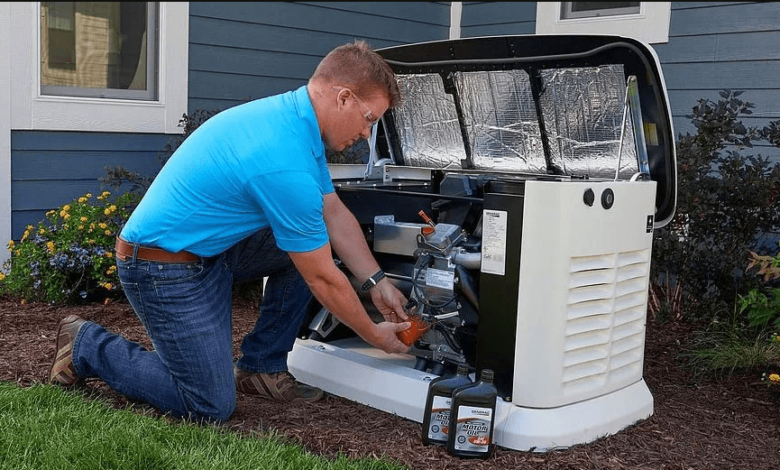Generator Service: Why Regular Maintenance Is Critical for Performance and Uptime

In any operation where power continuity is essential, diesel generators provide a dependable line of defence. From mining sites and construction zones to logistics hubs and emergency systems, these machines often carry the load when grid supply fails or is simply unavailable.
But owning or hiring a generator is only half the equation. Keeping it in peak working condition is what ensures performance when it matters most. This is where generator service becomes a critical part of your operational plan.
Why generator servicing should never be an afterthought
Generators are typically designed for rugged, long-term use. However, like any mechanical system, they rely on moving parts, filters, fuel quality, electrical components, and external conditions. Over time, even the toughest units experience wear.
If servicing is skipped or delayed, the risks increase significantly:
- Failure to start when needed
- Reduced fuel efficiency and rising operational costs
- Overheating or mechanical damage
- Fuel contamination or blockages
- Emissions non-compliance or noise breaches
In high-stakes environments like mine camps or hospitals, the consequences of a generator failure can be severe. Regular service schedules help reduce those risks, extend asset life, and keep performance consistent.
What’s involved in generator service?
Service routines vary based on usage hours, model, and site conditions. That said, most service visits will follow a structured checklist to ensure both engine health and electrical safety.
A typical generator service includes:
- Oil and filter replacement to protect the engine from wear
- Coolant system checks including levels, hoses, and pump integrity
- Fuel system inspection for leaks, blockages, and contamination
- Air filter cleaning or replacement for proper combustion
- Battery testing to ensure starting power
- Inspection of belts, hoses, and seals for wear and deterioration
- Load testing to confirm output matches rated capacity
- Review of safety controls and shut-offs for emergency readiness
- Update of service records for compliance and asset tracking
More advanced or periodic services may also include alternator testing, exhaust inspection, or complete fuel system flushing, depending on site risk or criticality.
Signs your generator may need immediate attention
Even if your generator appears to be running, there are warning signs that should not be ignored. These include:
- Difficulty starting or inconsistent startup
- Fuel smells or visible leaks near the unit
- Black smoke or unusual exhaust
- Excessive vibration or noise
- Fault lights or alarms triggered on control panels
- A drop in power output under normal load
If any of these signs appear, it is best to schedule a service inspection right away. Early intervention helps avoid major repairs and unexpected downtime.
See also: Secure And Stylish: How To Choose The Right Storm Shutters For Your Home
Servicing for hired vs owned generators
Both owned and hired generators require servicing, but the responsibility may differ depending on your arrangement.
At GHASA, all diesel-fuelled generators supplied for hire are delivered fully serviced and site-ready. Scheduled maintenance is managed throughout the hire period, either by our technicians or in coordination with your team, depending on location and access.
For purchased units, GHASA offers service packages that support both warranty maintenance and long-term care. These packages can be tailored for fixed-site or mobile assets, from 10 kVA portable sets to multi-megawatt containerised systems.
The value of site-specific service planning
One-size-fits-all servicing does not work for every generator. Units operating in hot, dusty, or high-humidity environments often require more frequent filter changes and inspections. Standby generators may not run daily, but they still need regular checks to ensure readiness.
A service provider familiar with local conditions can build a tailored schedule based on:
- Generator size and load profile
- Site environment and climate
- Operating hours and fuel turnover
- Criticality of power continuity
- Compliance requirements, especially for environmental or safety audits
This kind of planning is particularly important in remote WA locations, where equipment access is limited and transport delays can extend downtime.
Working with qualified technicians
Generator servicing should always be performed by qualified, experienced technicians who understand diesel engines and electrical systems. Mistakes in servicing can lead to equipment damage or personal injury.
Look for technicians who are:
- Certified in diesel engine maintenance
- Experienced with the generator brands you use
- Able to provide documentation for service records and compliance
- Equipped with diagnostic tools, spare parts, and safety gear
- Trained in fuel handling, spill prevention, and fire risk management
At GHASA, our team services all major generator brands and has supported installations and field operations across Perth, Kalgoorlie, Karratha, and remote mining regions.
Keep your generator running strong with GHASA
A diesel generator is a serious investment in operational resilience. But to deliver value, it must be maintained to the standard expected of any critical asset.
Generator servicing is not just about fixing problems. It is about preventing them. It keeps fuel clean, parts moving, and systems responsive. It ensures that when the power goes out or the load spikes, your generator performs exactly as it should.
Whether you’re running a fleet of units across remote WA or managing a single standby generator at your facility, make generator service a core part of your operations.
To learn more about servicing, rental, or purchase of diesel-fuelled generators, visit
https://ghasa.com.au/diesel-fueled-generators/ or call GHASA on (08) 9359 1988.



